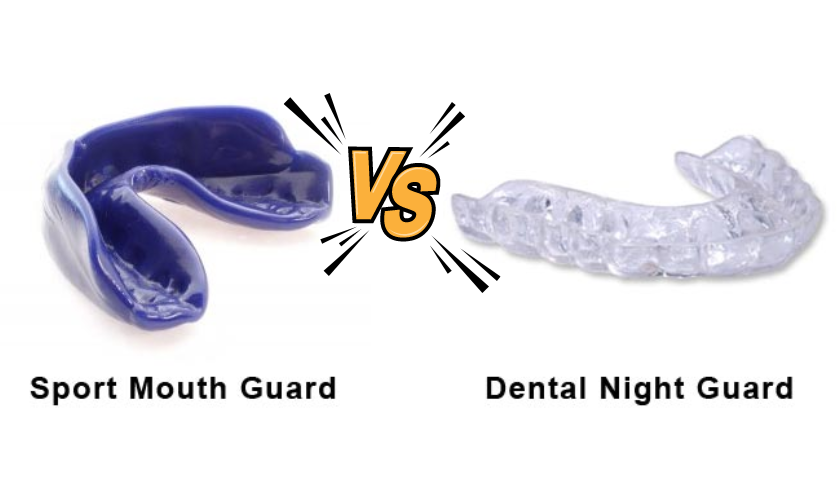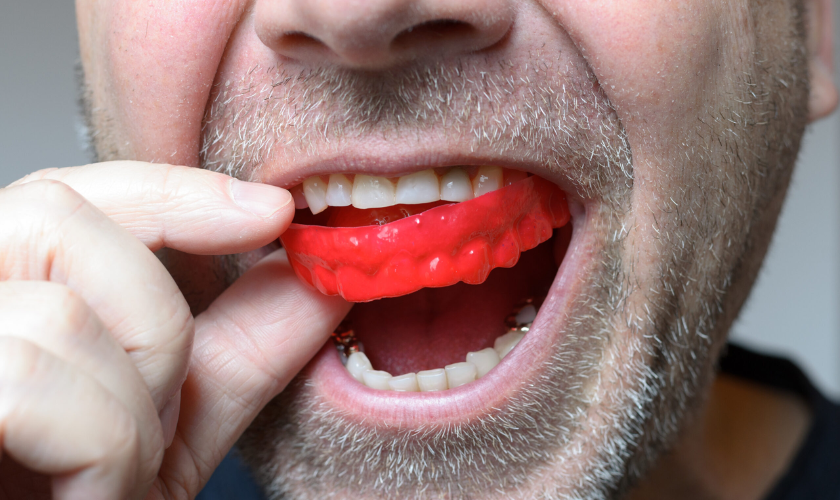Pay Online
What is the Difference Between a Mouth Guard and a Sports Guard?

In the realm of sports and physical activities, safeguarding your oral health is paramount. Whether you’re engaging in high-contact sports or recreational activities, protecting your teeth, gums, and jaw from potential injuries is crucial. Two common protective devices used for this purpose are mouth guards and sports guards. While these terms are often used interchangeably, there are subtle yet significant differences between them that every athlete should understand.
Understanding Mouth Guards:
A mouth guard is a dental appliance designed to protect the teeth, gums, and soft tissues in the mouth from injuries sustained during sports or other physical activities. It typically covers the upper teeth and is primarily used to prevent dental trauma such as broken teeth, lacerations to the lips or tongue, and damage to the jaw.
Types of Mouthguards:
Stock Mouth Guards: These pre-formed guards are ready to wear and come in standard sizes. While they are inexpensive and readily available, they often provide poor fit and minimal protection.
Boil-and-Bite Mouth Guards: These guards are made from thermoplastic material that softens when boiled and then molded to fit the individual’s teeth and mouth structure. They offer better fit and protection compared to stock mouthguards and are suitable for most athletes.
Custom-Fitted Mouth Guards: Crafted by dental professionals, custom-fitted mouth guards offer the highest level of protection and comfort. They are made from impressions of the athlete’s teeth, ensuring a precise fit that enhances performance and reduces the risk of injury.
Understanding Sports Guards:
While mouth guards are primarily focused on protecting the teeth and oral tissues, sports guards provide broader protection that extends beyond the mouth. Sports guards are designed to shield not only the teeth but also the jaw, cheeks, and gums from impact injuries during athletic activities.
Key Differences Between Mouth Guards and Sports Guards:
Coverage Area: Mouth guards typically cover the upper teeth and are designed to protect the teeth and oral tissues. In contrast, sports guards offer extended coverage, protecting not only the teeth but also the jaw, gums, and surrounding facial structures.
Level of Protection: Sports guards provide a higher level of overall protection compared to mouth guards due to their broader coverage area. They are particularly beneficial for high-impact sports where the risk of facial injuries is heightened.
Design and Construction: While both mouth guards and sports guards are made from similar materials such as thermoplastic, sports guards are typically thicker and more durable to withstand greater impact forces.
Choosing the Right Protective Gear:
When selecting between a mouth guard and a sports guard, it’s essential to consider the nature of the activity you’ll be engaging in, as well as your individual needs and preferences. Here are some tips for choosing the right protective gear:
Assess the Risk: Evaluate the level of contact and impact involved in your sport or activity. If you’re participating in high-contact sports such as football, hockey, or martial arts, opt for a sports guard for comprehensive protection.
Consider Comfort: Comfort is key to ensuring compliance with wearing protective gear. While custom-fitted mouth guards offer the best fit and comfort, boil-and-bite options can also provide a satisfactory balance of protection and comfort.
Prioritize Quality: Invest in high-quality protective gear from reputable manufacturers to ensure optimal protection and durability. Cheap, poorly constructed guards may offer insufficient protection and wear out quickly.
FAQs:
Q1: Can I use a mouth guard for high-impact sports?
A1: While mouth guards provide basic protection for the teeth and oral tissues, they may not offer adequate protection for high-impact sports. It’s recommended to use a sports guard for activities with a higher risk of facial injuries.
Q2: How often should I replace my mouth guard or sports guard?
A2: Mouth guards and sports guards should be replaced periodically, especially if they show signs of wear and tear or if the athlete’s teeth have undergone significant changes in alignment. It’s generally advisable to replace them at least once a year.
Q3: Can I wear braces with a mouth guard or sports guard?
A3: Yes, both mouth guards and sports guards can be worn with braces. However, it’s essential to ensure a proper fit to accommodate the braces and provide adequate protection to the teeth and surrounding structures.
Prioritizing oral health and safety is essential for athletes of all levels. Whether you’re a seasoned competitor or a recreational enthusiast, investing in quality protective gear such as mouth guards or sports guards can help prevent costly dental injuries and ensure a long-lasting, healthy smile. Consult with your dentist or orthodontist to determine the best protective gear for your needs and enjoy peace of mind while pursuing your athletic endeavors.
In conclusion, while mouth guards and sports guards serve the common purpose of protecting the oral cavity during physical activities, understanding their differences is crucial for selecting the most appropriate option. By choosing the right protective gear and adopting proper oral hygiene practices, athletes can minimize the risk of dental injuries and focus on achieving their performance goals with confidence.



